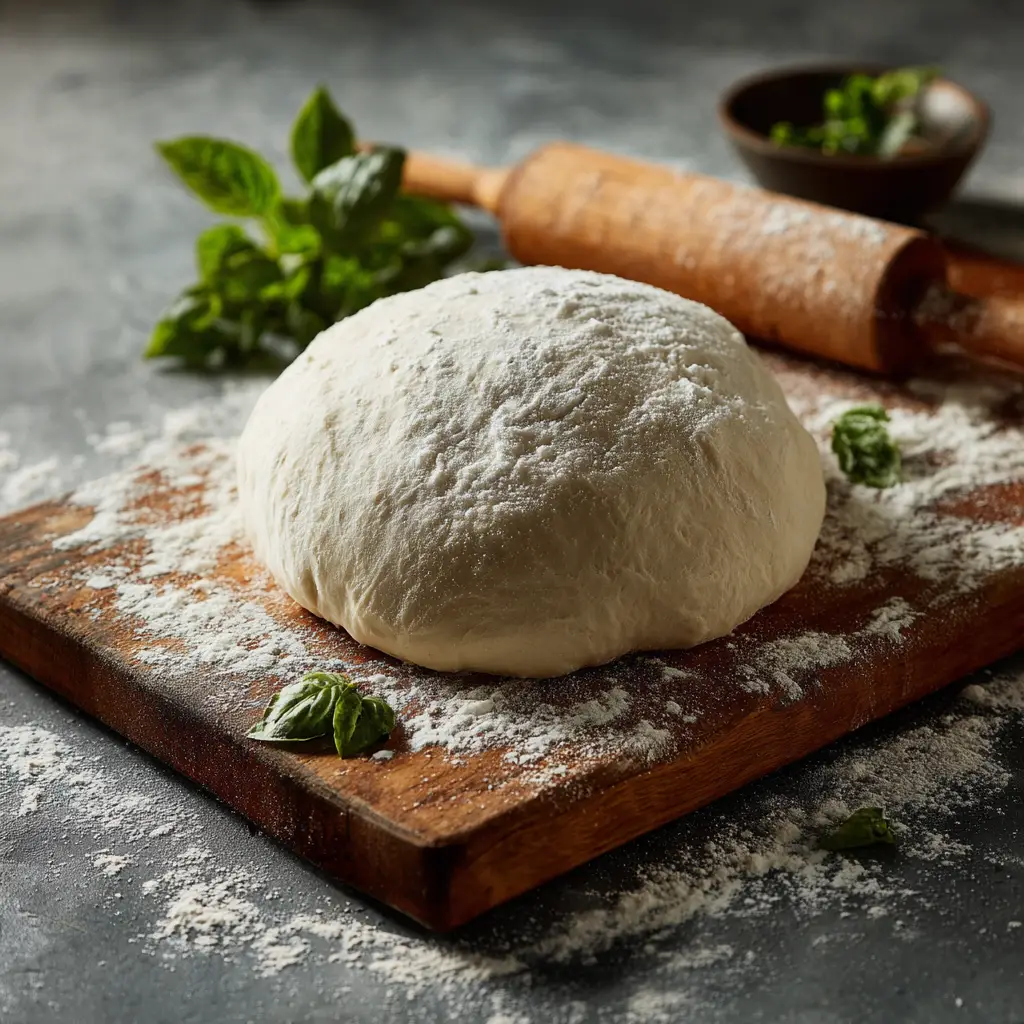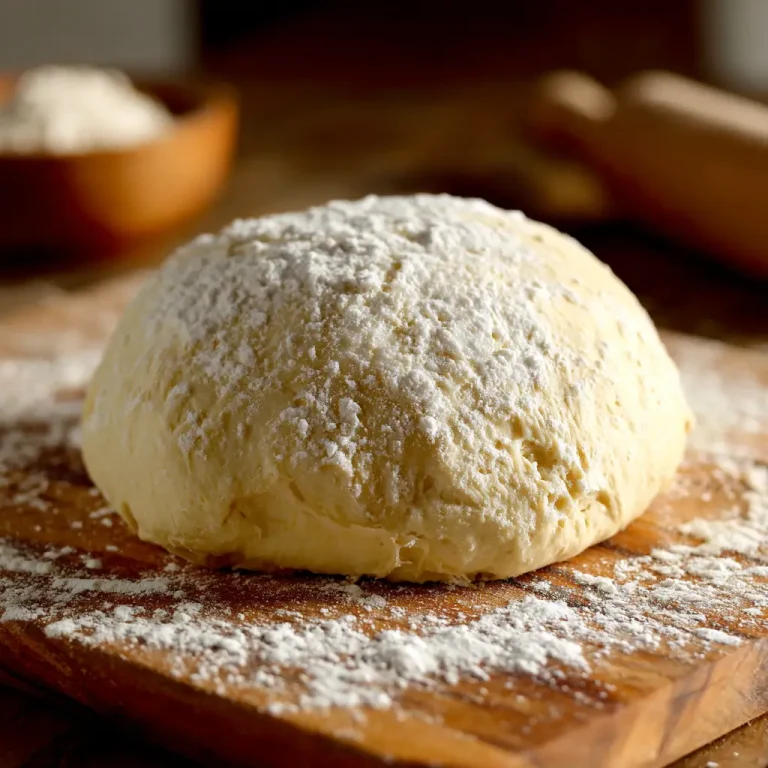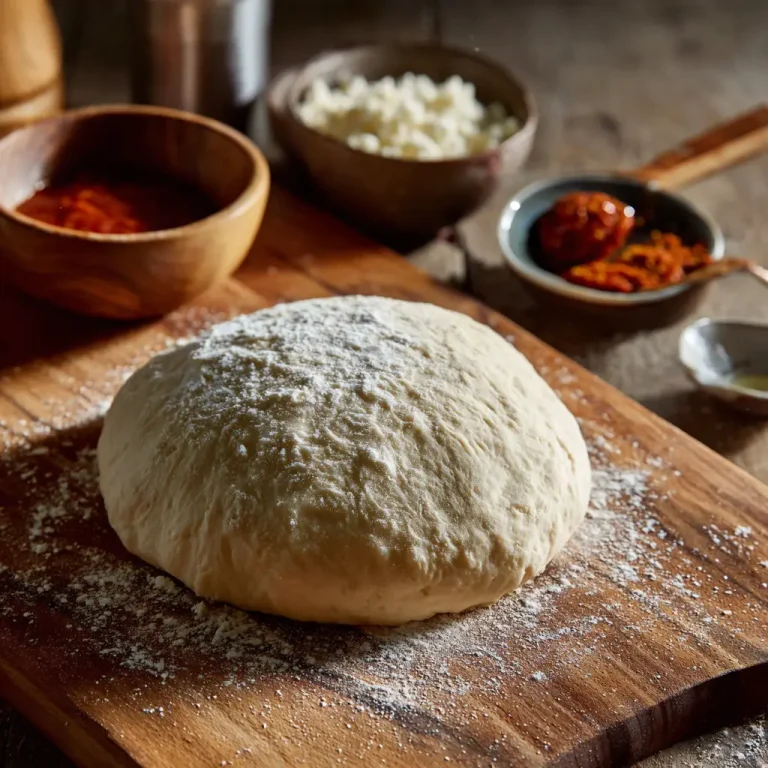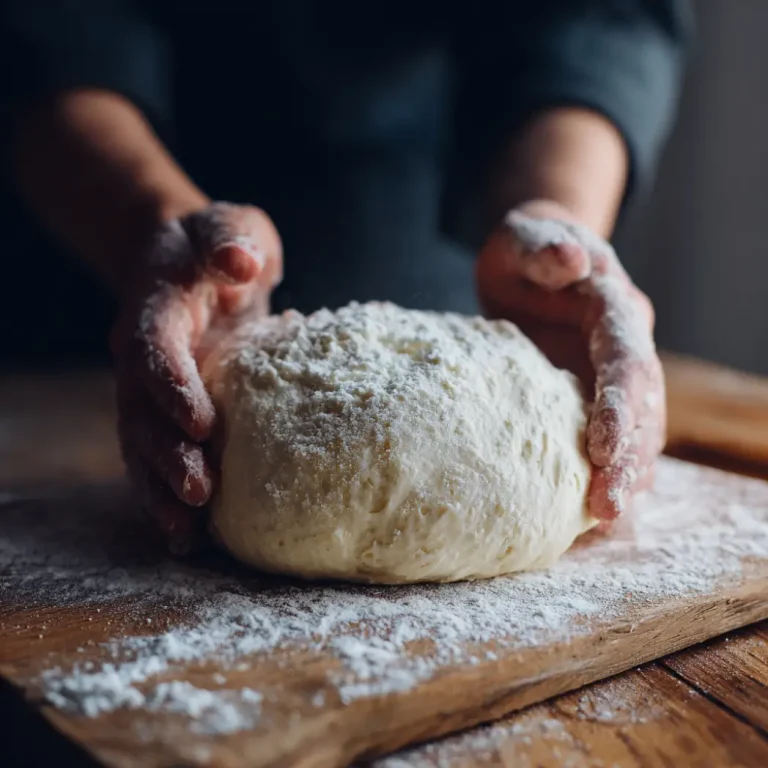Introduction
Neapolitan pizza dough represents the soul of authentic Italian pizza. It delivers a soft, chewy, and slightly crisp crust that becomes the perfect base for simple toppings like fresh mozzarella, basil, and rich tomato sauce. Every bite reflects a tradition that began in Naples centuries ago, where pizza was made with only a few ingredients but crafted with great care and patience.
The true magic of Neapolitan pizza lies in its texture and aroma. When baked at high heat, the edges puff up beautifully, forming an airy crust with charred spots that bring out a smoky depth of flavor. The dough is light yet flavorful, giving every topping a perfect foundation without feeling heavy. Unlike many modern pizzas, this one focuses on simplicity and purity, letting the ingredients shine naturally.
Making Neapolitan pizza dough at home is easier than it seems. With the right balance of flour, water, yeast, and salt, along with some resting time, you can create a dough that rivals your favorite pizzeria. The slow fermentation process enhances the flavor and gives the dough its signature elasticity. Once you experience the result, you’ll understand why this style of pizza continues to be loved across generations.
Ingredients Needed
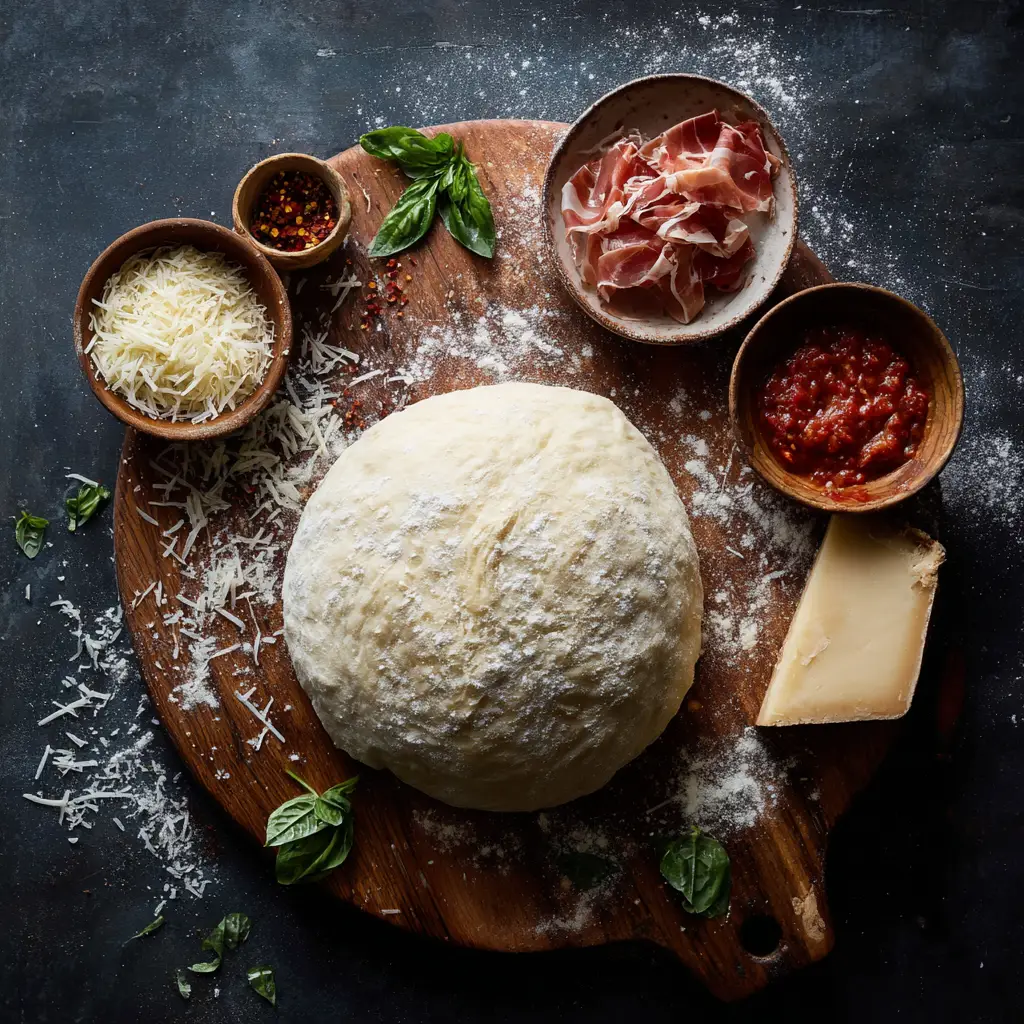
| Ingredient | Quantity | Calories (approx.) |
|---|---|---|
| Italian 00 flour | 3 ½ cups | 460 |
| Warm water | 1 ¼ cups | 0 |
| Active dry yeast | 1 teaspoon | 10 |
| Salt | 1 ½ teaspoons | 0 |
| Olive oil | 1 tablespoon | 120 |
Step-by-Step Cooking Instructions
Step 1: In a small bowl, mix warm water with the yeast. Let it sit for about five minutes until bubbles form on the surface, showing that the yeast has activated.
Step 2: In a large mixing bowl, add the Italian 00 flour and salt. Create a small well in the center and pour in the yeast mixture.
Step 3: Stir the ingredients with a wooden spoon until they begin to come together. Once it starts to form a shaggy dough, use your hands to continue mixing.
Step 4: Transfer the dough to a clean surface and knead it for about ten minutes. The texture should become smooth, elastic, and slightly tacky to the touch.
Step 5: Add the olive oil and continue kneading for another two minutes to incorporate it evenly throughout the dough. This step helps enhance flavor and texture.
Step 6: Shape the dough into a ball and place it in a lightly oiled bowl. Cover with a damp cloth or plastic wrap. Let it rise in a warm spot for two hours or until it doubles in size.
Step 7: Once the dough has risen, punch it down gently to release air bubbles. Transfer it to a floured surface and divide it into two equal portions.
Step 8: Shape each portion into a smooth ball and cover them with a damp cloth. Let them rest for at least thirty minutes to relax the gluten.
Step 9: Preheat your oven to its highest temperature, usually around 475°F to 500°F (245°C to 260°C). If you have a pizza stone, place it inside to heat up.
Step 10: Roll or stretch each dough ball gently into a circle about ten inches wide. Avoid pressing too hard on the edges to keep them puffy. Add your favorite toppings and bake for about seven to nine minutes until golden and slightly charred.
Tips for Customizing the Recipe
To make your Neapolitan pizza dough even more flavorful, let it ferment slowly in the refrigerator for twenty-four hours instead of using it immediately. This extended resting time deepens the taste and gives the crust a better texture. You can also experiment with blending different flours such as bread flour or whole wheat flour for a more rustic feel.
If you enjoy a crispier base, reduce the water slightly or bake your pizza longer at a slightly lower temperature. For an airy crust, make sure the dough is well-hydrated and not overworked. Adding a teaspoon of honey or sugar can help boost browning and create a slightly sweeter crust. When shaping, always handle the dough gently to keep the internal air bubbles that create the signature light texture.
Nutritional Information
A serving of Neapolitan pizza dough provides around 280 calories, with about 8g of protein, 50g of carbohydrates, and 6g of fat. It is low in sugar and free from preservatives, making it a wholesome choice for homemade pizza lovers. The olive oil adds healthy monounsaturated fats, while the use of 00 flour ensures a delicate, digestible texture. Since the dough is simple and clean, it pairs beautifully with fresh toppings without adding unnecessary heaviness.
Serving Suggestions
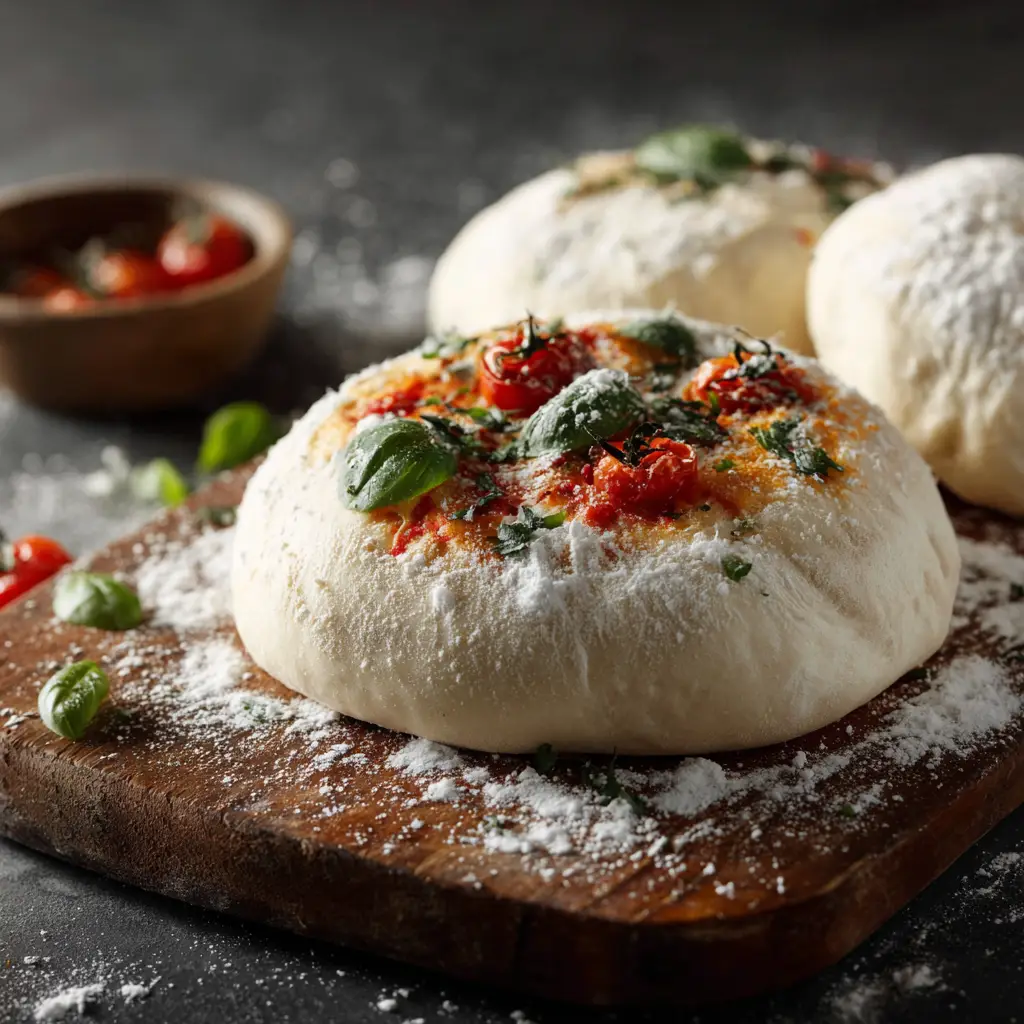
Neapolitan pizza dough serves as the perfect canvas for endless flavor combinations. Traditional toppings like fresh mozzarella, tomato sauce, and basil create the iconic Margherita pizza that never goes out of style. For a slightly different taste, try adding roasted vegetables, thinly sliced prosciutto, or mushrooms. You can even use this dough for calzones or flatbreads by shaping it differently and adjusting baking time.
When hosting guests, set up a pizza bar with various toppings so everyone can build their own creation. For an authentic touch, drizzle a bit of olive oil over the baked pizza and finish with a sprinkle of sea salt. Serve it hot straight from the oven with a side of fresh salad or antipasto platter. The light crust and vibrant flavors make it ideal for any occasion, from casual family dinners to special celebrations.
Conclusion
Neapolitan pizza dough stands as a timeless recipe that connects simplicity with excellence. Each step in its preparation rewards patience with incredible results, giving you a crust that is light, tender, and bursting with character. The golden edges, airy center, and irresistible aroma make every bite a reminder of traditional Italian craftsmanship.
Preparing it at home brings a sense of satisfaction that few recipes can match. The ingredients are minimal, but the result feels special, full of flavor and authenticity. Whether topped with classic ingredients or creative combinations, Neapolitan pizza dough transforms any meal into a celebration of taste and tradition. Once you master it, you’ll never look at pizza the same way again.

